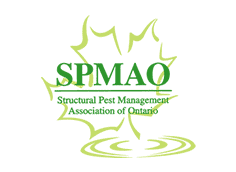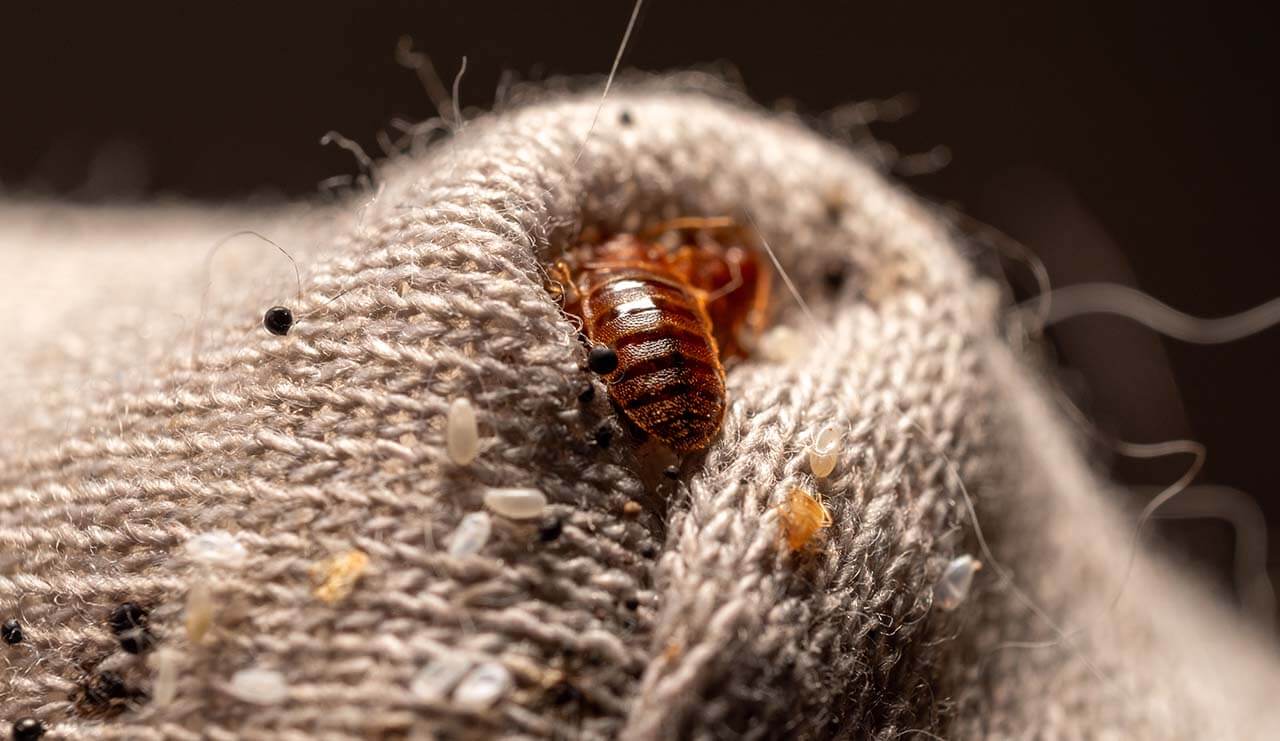
Finding bed bugs on a mattress requires immediate action. These pests breed quickly and can move from the bed to other parts of the home within days. Typical signs include small reddish-brown bugs about the size of an apple seed, tiny white eggs in mattress seams, dark fecal spots, and small blood stains on sheets or pillowcases. Apart from obvious bites and itching, seeing these signs means the bugs are already feeding and nesting close to where you sleep.
Because adult bed bugs can live for months without feeding, any delay gives them more time to hide and multiply. Quick action prevents them from spreading and makes removal far easier. In this guide, we explain how to get rid of bed bugs in a mattress safely and effectively using proven methods that stop the infestation at its source.
1. Strip and Launder All Bedding Immediately

All fabrics on and around the bed must be removed and washed as soon as bed bugs are discovered. Carefully strip the bed, including sheets, pillowcases, blankets, and mattress covers, to prevent insects or eggs from falling onto the floor or nearby furniture. Handle each item gently and carry it directly to the washer to avoid spreading bed bugs to other rooms.
Wash every piece in hot water at a minimum of 120°F (49°C) and dry on the highest setting for at least 30 minutes. Sustained heat kills bed bugs and their eggs at every stage of life, making laundering one of the most effective non-chemical treatments. According to temperature-based bed bug control methods, consistent high heat remains one of the most reliable ways to eliminate infestations in bedding and mattresses.
Once everything is clean, keep the bed bare while the mattress and frame are treated. Removing contaminated fabrics early in the process limits reinfestation and makes the following treatment steps more effective.
2. Vacuum and Inspect the Mattress Thoroughly
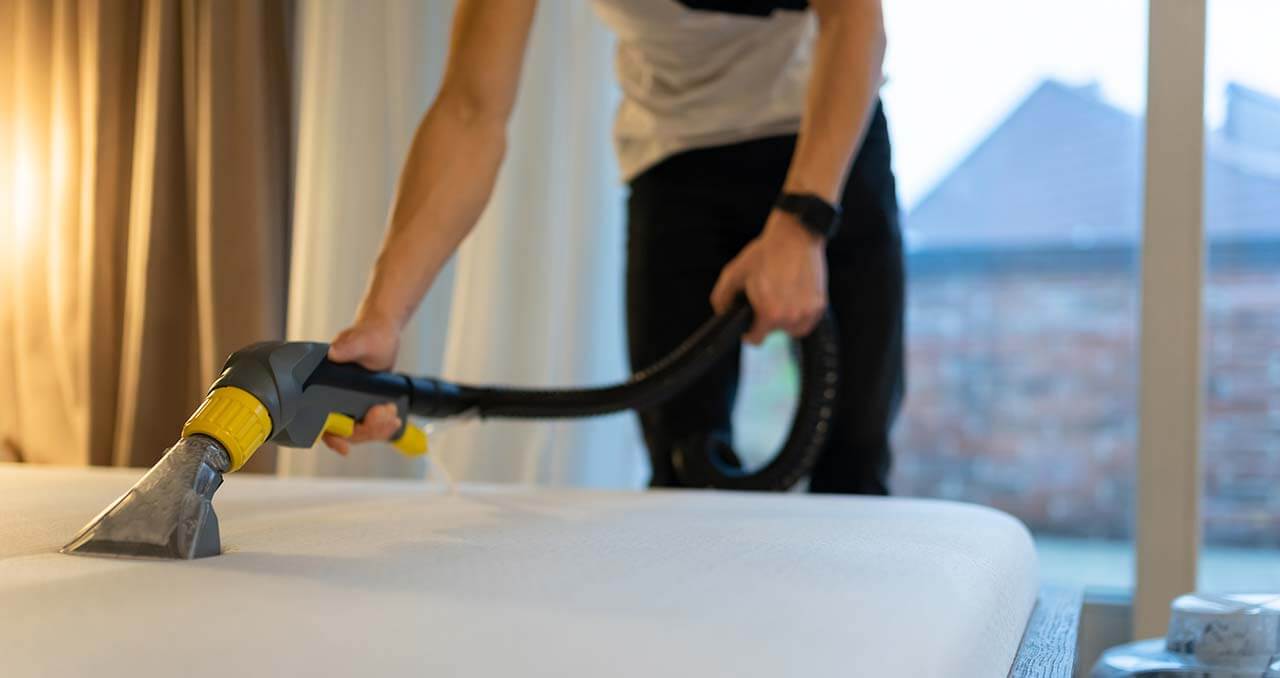
Use a high-powered vacuum with a crevice attachment to target seams, tufts, and the folds under mattress labels. Move slowly along each edge to capture both live bugs and loose eggs. Concentrate on corners and stitching where bed bugs cluster.
Before vacuuming, scrub seams with a stiff brush to break apart dried egg casings and loosen debris. This makes the vacuum more effective at pulling out hidden insects. For deeper suction, press the crevice tool firmly against the fabric and overlap each pass.
After vacuuming, seal the vacuum bag in a plastic bag and discard it outdoors. If the unit has a canister, empty it into an outdoor trash bin and rinse it with hot, soapy water. Clean the brush and attachments as well to avoid carrying bugs to other rooms.
Vacuuming will not eliminate every insect, but it removes a large portion of the visible population and exposes hidden areas for more thorough heat or steam treatment.
3. Apply Heat or Steam Treatment
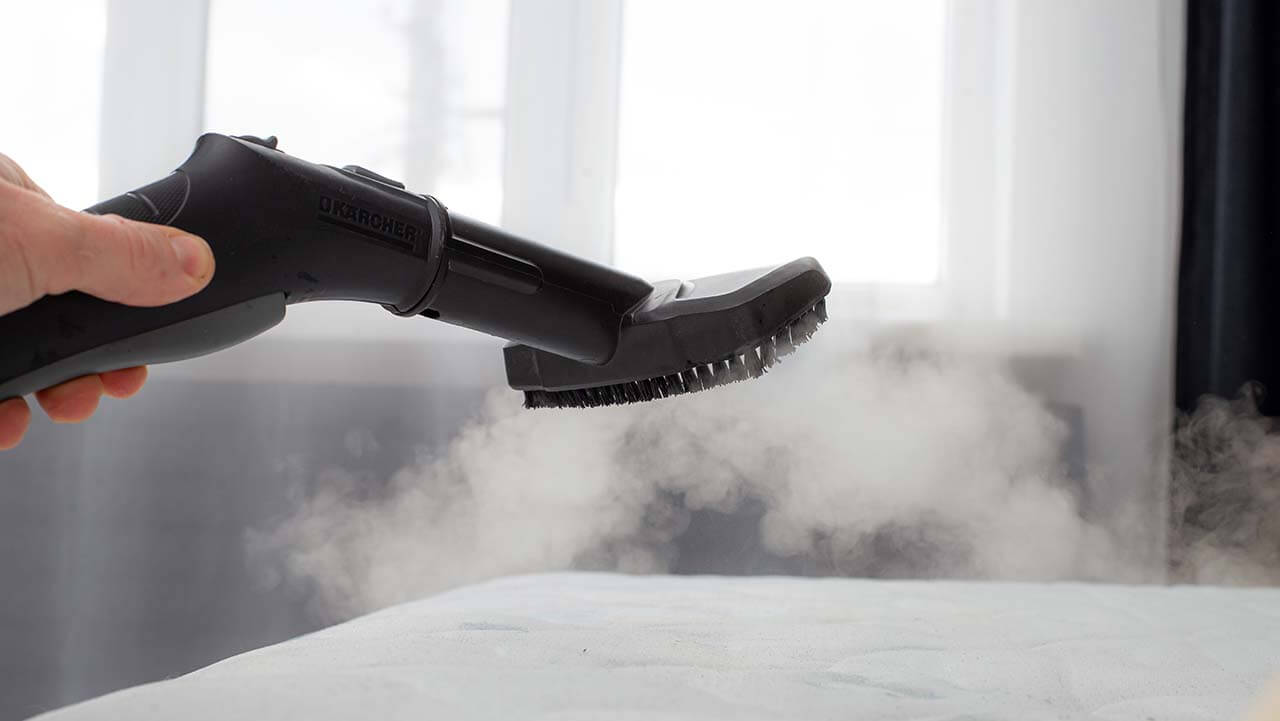
Steam treatment reaches deep into the mattress where bed bugs and their eggs often hide. Move a steam cleaner slowly across the surface, guiding the nozzle along seams, buttons, tufts, and folds where insects cluster. Maintain a temperature above 120°F (49°C) for several minutes in each area. This level of heat kills both live bed bugs and their eggs on contact.
Household steamers may not stay hot enough to penetrate dense materials or thicker sections of the mattress. Incomplete heating can allow some bugs or eggs to survive and re-emerge later. For severe infestations that extend beyond the bed, enlist the help of professional bed bug exterminators with industrial-grade steam and heat systems to ensure full coverage of the affected areas and consistent results.
After steaming, allow the mattress to dry completely before covering or reusing it. Proper drying prevents moisture buildup that could lead to mold or damage. When performed correctly, heat treatment targets hidden pests and prepares the surface for long-term protection through encasement.
4. Encase the Mattress
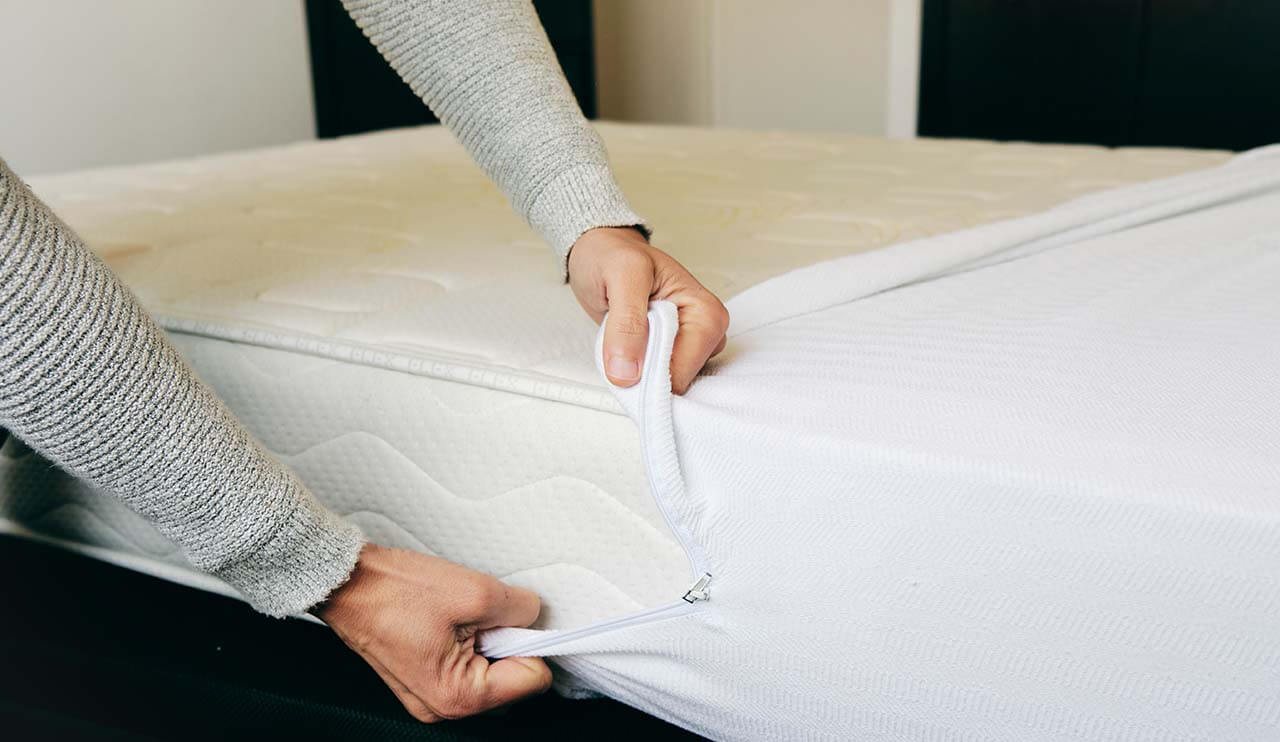
Once the mattress has been cleaned and treated, enclosing it stops any remaining bed bugs from escaping or reentering. Use a certified bed bug mattress protector designed specifically for pest control. These encasements feature tight weaves and reinforced zippers that block even the smallest insects. A proper fit prevents gaps along corners or seams where bugs could hide or reappear.
Keep the cover sealed for at least 12 months. Bed bugs can survive for several months without feeding, so keeping the mattress encased ensures that any trapped insects die off naturally over time. Do not remove or unzip the cover during this period, even if the infestation appears gone.
If the mattress is torn, heavily stained, or contains deep nesting areas, replacement may be the better option. In cases where the infestation has spread widely, professional guidance can determine whether encasing or disposal offers the most effective long-term solution.
5. Treat the Surrounding Area

Bed bugs rarely stay confined to the mattress. They often hide in cracks, crevices, and joints of nearby furniture and walls. Thoroughly cleaning the surrounding area ensures the infestation does not return once the bed is treated.
Vacuum and steam along the bed frame, headboard, baseboards, and nightstands. Pay close attention to screw holes, joints, and corners where bed bugs nest during the day. Use steam to reach tight areas that a vacuum cannot access, maintaining heat above 120°F to kill insects and eggs.
After cleaning, apply food-grade diatomaceous earth or an approved bed bug powder to wall gaps, carpet edges, and behind furniture. These fine powders act as natural desiccants, drying out any remaining insects over time.
Our certified specialists at Bed Bug Exterminator Pro use integrated pest management that combines physical removal, heat, and effective chemical treatments to eliminate infestations completely. Our approach targets both visible bugs and hidden eggs, ensuring long-term control. Skipping treatment of the surrounding area allows stragglers to move back into the bed, undoing earlier efforts and restarting the infestation cycle.
6. Monitor and Prevent Reinfestation
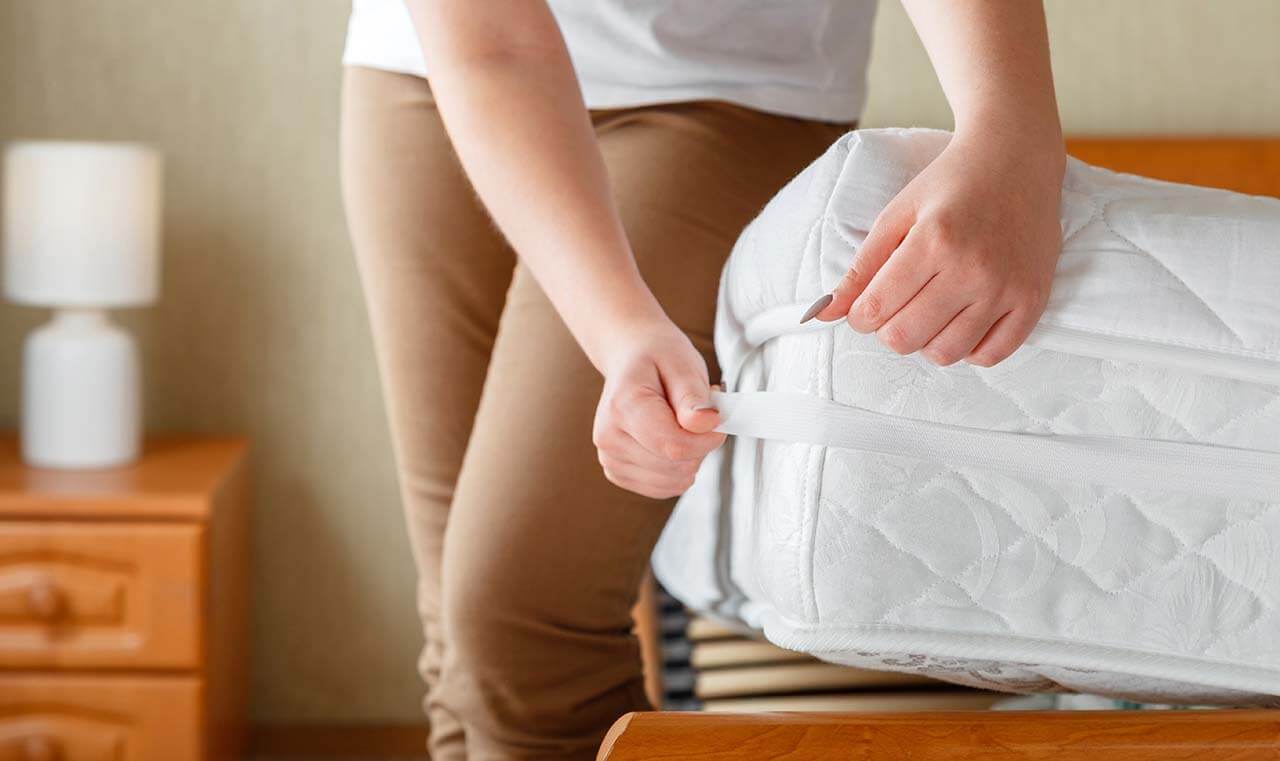
Consistent follow-up is the only way to confirm that every bed bug is gone. These insects can survive for weeks without feeding and often hide in places most people overlook. Careful monitoring prevents a few survivors from rebuilding the infestation.
Use bed bug interceptors under each bed leg to track movement. These are small, round plastic cups with slippery walls that trap bed bugs as they try to climb up or down from the bed. The outer ring catches bugs coming from the floor, while the inner ring traps those leaving the mattress. Checking the traps weekly reveals whether any activity remains. If even one bug appears, repeat heat or vacuum treatment immediately. Inspect mattress seams, encasement zippers, and nearby furniture every week for new eggs or dark droppings that indicate a fresh cycle.
Good maintenance habits make a major difference. Keep floors and furniture free of clutter so bed bugs have fewer hiding spots. Vacuum often, especially around baseboards and bed frames. Before bringing used furniture into the home, check seams and screw joints with a flashlight. Reinforcing these habits with practical tips for deterring bed bugs ensures the infestation stays under control.
End Mattress Infestations for Good
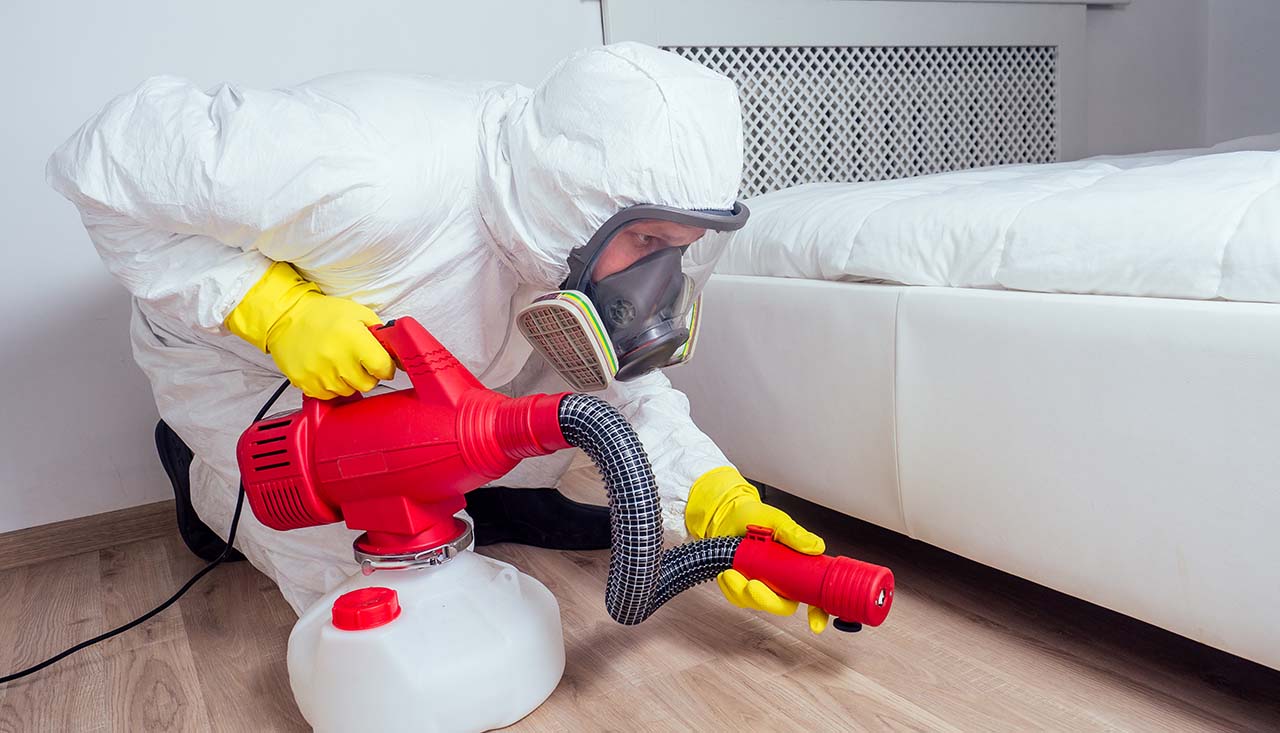
Getting bed bugs off your mattress requires fast, coordinated action. The longer they stay, the deeper they spread into bedding, furniture, and walls. Effective control comes from using several steps in sequence, such as washing bedding on high heat, vacuuming every seam, steaming the mattress, and sealing it with a certified encasement. Each action works together to stop the infestation and prevent it from returning.
When an infestation grows beyond what at-home methods can handle, we step in with professional solutions. Our team at Bed Bug Exterminator Pro combines advanced heat and steam systems with Health Canada–approved treatments to reach every hiding spot and eliminate bed bugs at all stages of life. We don’t rely on a single method. Instead, we design a treatment plan that fits the size and severity of your infestation. Whether it’s a light problem confined to a mattress or a full property outbreak, we use proven techniques to restore your space and give you lasting peace of mind.



